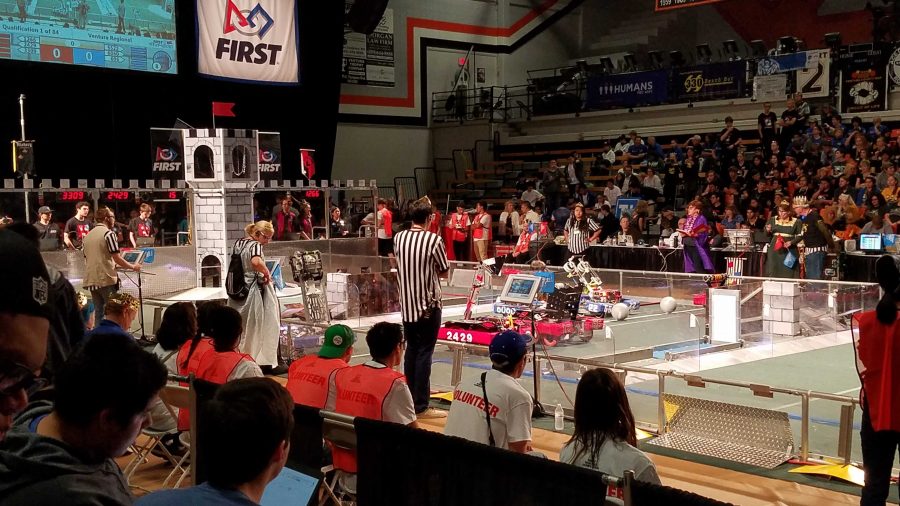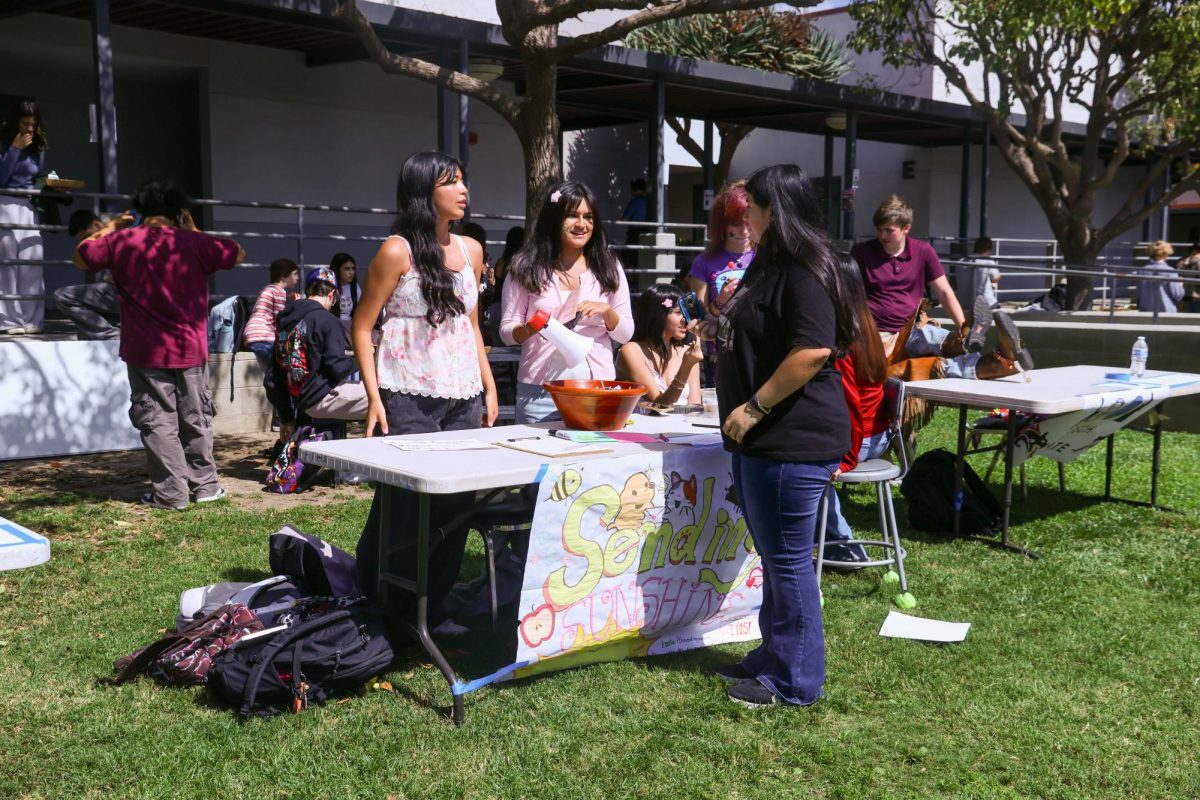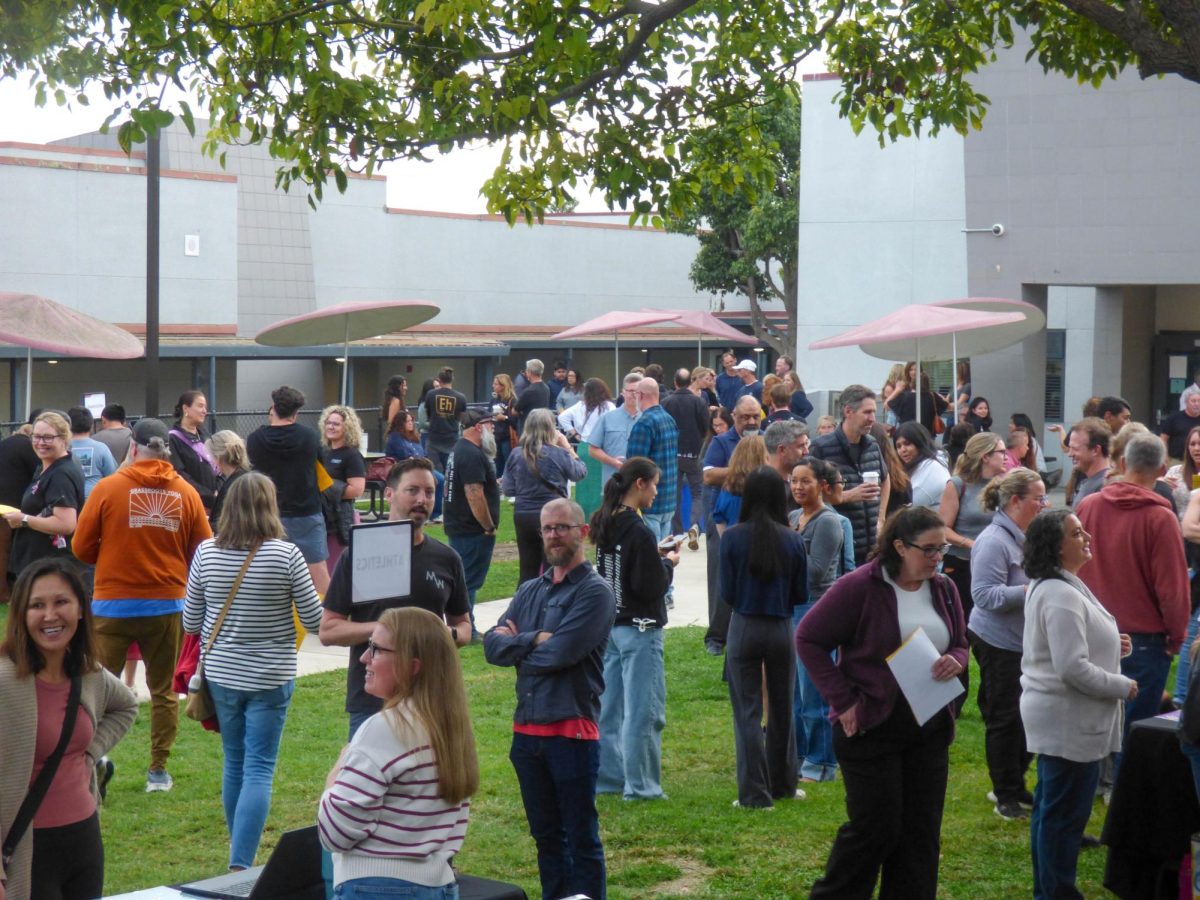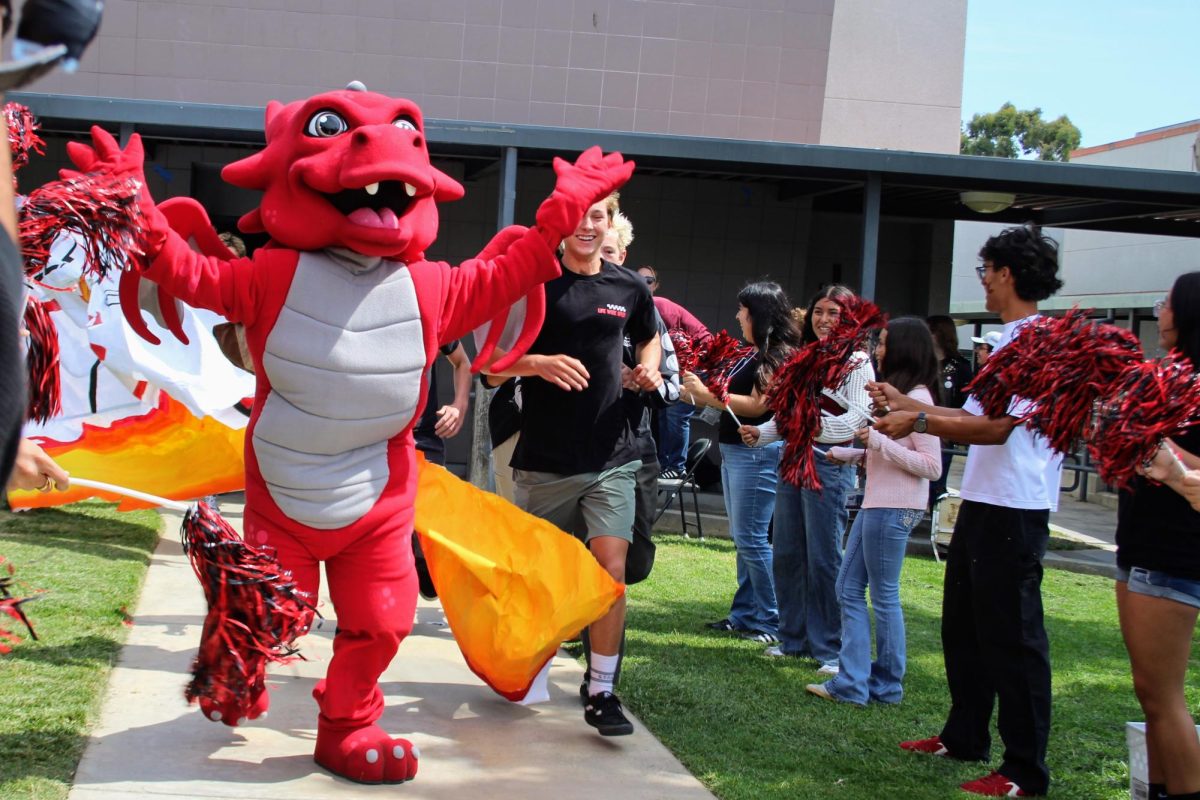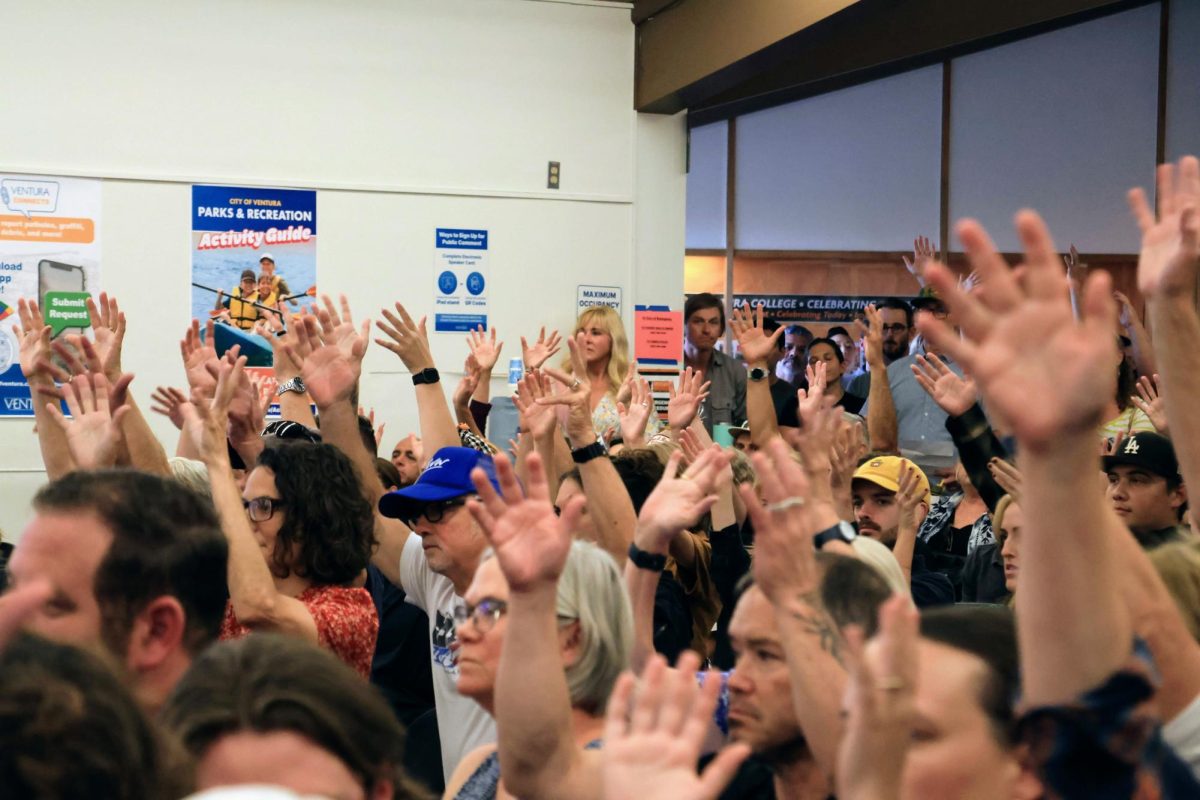The crowd roared their teams on as robots raced to the finish line and battled to make the final goal. For the first time ever, Ventura hosted a FIRST Robotics Competition (FRC) at Ventura College from March 24 to 26.
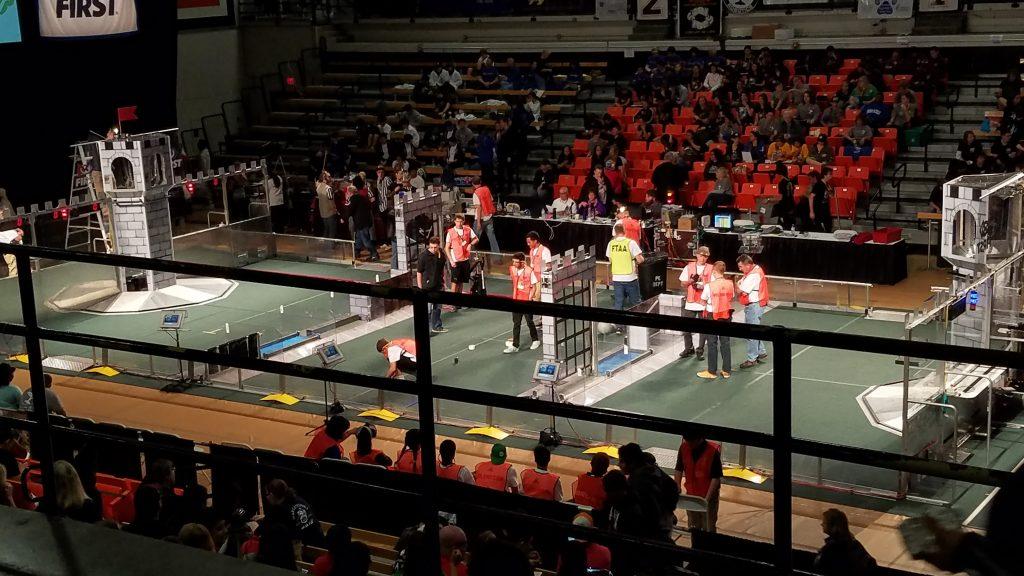
The crowd roared their teams on as robots raced to the finish line and battled to make the final goal. For the first time ever, Ventura hosted a FIRST Robotics Competition (FRC) at Ventura College from March 24 to 26.
FRC is an international high school competition encouraging teens to become interested in math, science, engineering and technology. It is part of a larger project, aimed at the entire youth, with four competitions, including FRC.
The competition runs for six weeks starting with the construction of each team’s robot, leading up to the qualification tournament. Teams must build a robot that can accomplish a set amount of tasks. The tasks change every year to keep the game interesting.
Forty-three teams competed at Ventura College. Four teams traveled from China and 39 teams gathered from all across California.
Ventura Unified School District has a team with students from around Ventura, several of which are students at Foothill.
This year’s theme was the Medieval era and consisted of six interchangeable obstacles, allowing for more than 10,000 different playing fields. The obstacles were changed every round and after a few rounds the audience had the opportunity to pick one obstacle that would be put into play.
Each team was paired with one or two other teams, creating two large opposing teams with two to three robots per team.
The objective in each match was for teams to work together to get past the obstacles and grab dodgeballs from the center of the field. They then had to shoot the balls into goals on the enemy’s tower.
When the round started, robots were autonomous, attempting to get past the obstacles without an operator. Each team got points according to how many robots they got past the obstacles.
After the 15-second-start, teams were allowed to take control of their bots and manually operate them for 90 seconds. At the end of each round, robots had to make their way to the enemy tower and either park near the base or scale it.
The process started in early January when students formed teams and found mentors to help them along the way.
One mentor, Frank “Peter” Wahl, explained that one aspect of being a mentor, aside from assisting with the electronics and building process, is allowing students to learn from their mistakes.
“Is there more value in letting them make a mistake and learn themselves, or guiding them through avoiding the mistake in the first place?” Wahl pointed out.
Once a team is formed and admission fees are paid, they receive a packet of parts and guidelines for the competition. From there, it is up to the group to decide how they want to build their robot.
[soundcloud url=”https://api.soundcloud.com/tracks/255470734″ params=”color=ff0000&auto_play=false&hide_related=false&show_comments=true&show_user=true&show_reposts=false” width=”100%” height=”166″ iframe=”true” /]
Foothill junior Jeremy Sim is on Ventura’s team. “Going into it, I thought that it would be somewhat similar to the process of building LEGOS where you get a pack and you build it and you create it however you want. It’s somewhat like that, except a lot more complicated,” Sim said.
To raise money in order to pay for their robots, teams look to local companies.
“We outreach to local companies such as Haas, Amgen, Qualcomm, College of the Canyons and other companies in the area. You’d be surprised how many actually say yes,” Sim said.
Jokingly, he admitted that his team “got rejected by NASA and Disney.” Other than that, he affirmed that most companies “at least give [them] a small donation.”
The VUSD team won the Entrepreneurship Award at the Ventura competition, which recognizes teams with exemplary business plans “to scope, manage, and achieve team objectives,” according to the FRC.
Two students, Jeremy Sim and Jonathan Sessa, were chosen as Dean’s List winners.
Sim found that, “winning the Dean’s List award is a life changing experience for [him]. The Dean’s List recognizes the most proactive students in FIRST robotics, and winning the award has allowed [him] to recognize [his] impact on the community and understand the expansion of inspiration of the STEM-related careers.”
The team, along with the other teams in their alliance, won the regional tournament and will now have the opportunity to advance to FTC World Championships.
Any teen can join the program and no experience in robotics is required; the mentors are there to help with that. It is a good opportunity for aspiring engineers or leaders.
[soundcloud url=”https://api.soundcloud.com/tracks/255468335″ params=”color=ff0000&auto_play=false&hide_related=false&show_comments=true&show_user=true&show_reposts=false” width=”100%” height=”166″ iframe=”true” /]
Wahl encourages youth to join. “I could see that there’s a whole spectrum of things for them to learn about: organization, social skills, working toward a team objective. And of course there’s the intellectual side of it, too.”
Background Photo Credit: Tyler Herzog/The Foothill Dragon Press
Correction: A previous version of this article said that Jonathan Sessa and Jeremy Sim had won the Chairman’s Award. That was incorrect, the two were Dean’s List winners. Additionally, the team won the regional competition, as well as the Entrepreneurship Award, and will be advancing to the World Championship.

